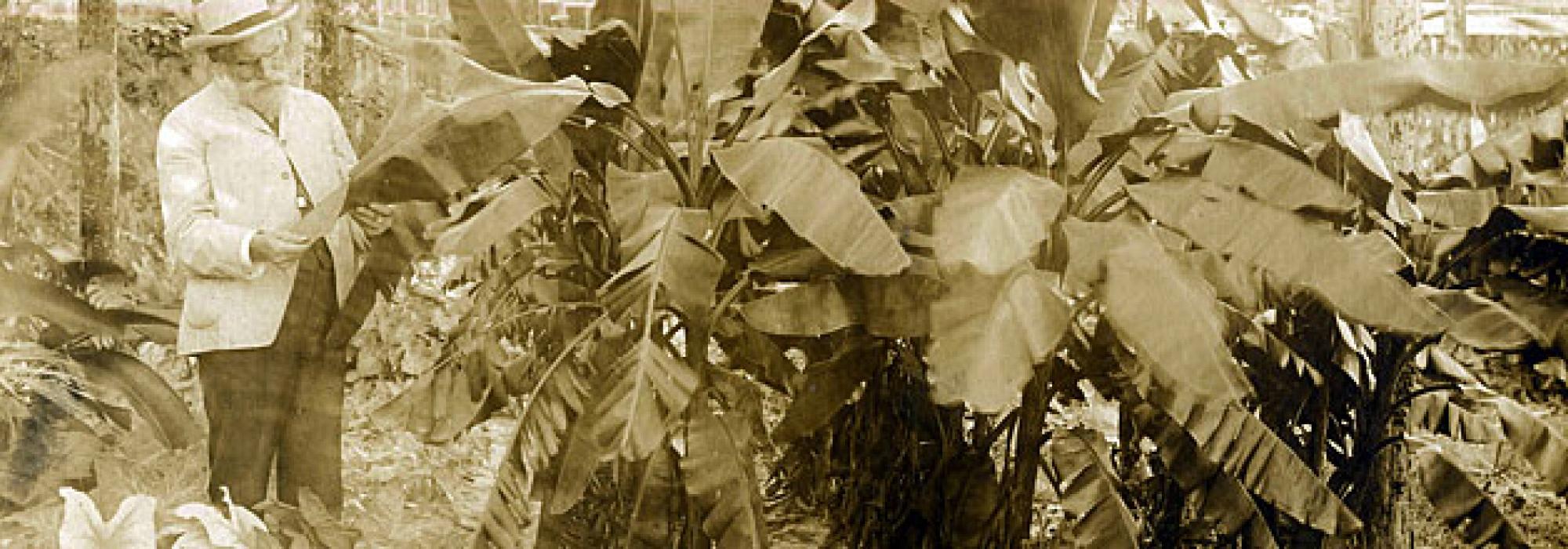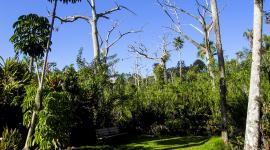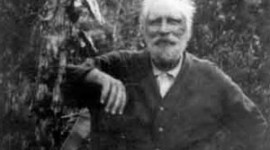H. Nehrling's Tropical Garden and Arboretum
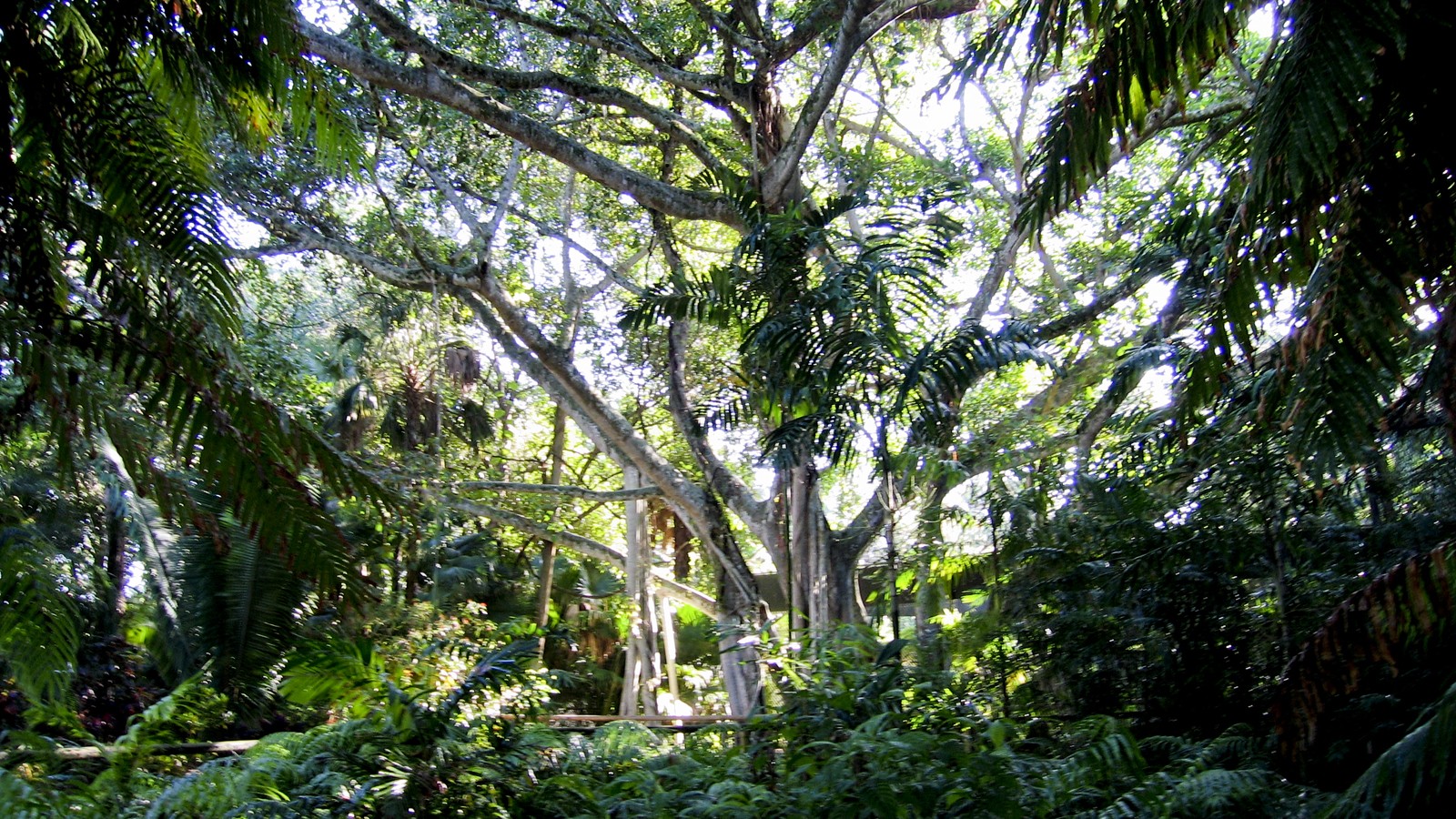
Henry Nehrling's legendary tropical botanical garden is threatened by the expanding Naples Zoo. A recently approved master plan calls for upgrades and expansion, but does little to protect Nehrling's original gardens.
After surviving hurricanes, floods, and fires, Henry Nehrling's legendary tropical botanical garden in Naples, Florida, is now threatened by the expanding Naples Zoo. A recently approved $70 million zoo master plan calls for upgrades and expansion, but does little to protect and nothing to restore Nehrling's original gardens.
History
During the late 1800’s, the fledgling resort community of Naples, Florida, was an isolated colony, with no roads to the outside world and accessible only by boat. While Naples was home to only a couple hundred full-time residents including fisherman, farmers, and cattleman, community leaders began work to attract wealthy seasonal guests. Founders invited Henry Nehrling, an eminent naturalist, to relocate to Naples, and then helped finance the establishment of his garden, as he was very much the type of educated, cultured individual they hoped to attract to their new community.
“My Garden of Solitude,” as he first called it, then later renamed “H. Nehrling’s Tropical
Gardens and Arboretum” resembled a miniature world of the subtropics and tropics. It was adorned with plants originating in South America, Africa, Madagascar, Ceylon, the Near East and Far East. Eminent botanists, horticulturists and leaders of industry visited to inspect plants rarely seen outside of herbariums. Nehrling’s library was the largest of its kind in Florida, and combined with living plants, made his garden a unique laboratory of Nature.
Early in his life success as a writer on ornithology, his reputation as a Wisconsin Audubonist, and the backing of literary and scientific societies had helped Nehrling gain the appointment to Secretary and Custodian of the Public Museum of Milwaukee. By 1904, the museum was among the top three natural history museums in the nation.
Nehrling had visited the World's Colombian Exposition in 1893 to commission natural history exhibits for the Milwaukee museum. After seeing the tropical plant exhibits in the Horticultural Hall he set his course to creating a tropical garden on land he owned in Central Florida. There at Gotha, he created his famous Palm Cottage Garden, which was considered the most beautiful garden in Florida. The climate proved too cold for strictly tropical plants, and Nehrling created a second garden in South Florida.
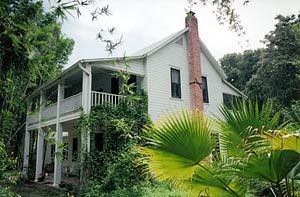
Nehrling's Palm Cottage in Naples, Florida
At Naples, disrupting the native landscape little as possible, with light horticultural editing, he melded cultivated areas of tropical plants into Nature. “How calm and beautiful is my life in the wilderness of tropical Florida! When I ramble around in my wilderness garden admiring the many tropical plants, the orchids and bromeliads and the ferns growing on wildwood trees, there is a complete impression of aloofness, wide separation from mankind, and remoteness from things modern and conventional. There are no lawns or broad open spaces. There are wild portions with narrow paths leading from one place to another. Native shrubs and trees form the structural foundation, while Japanese and Chinese evergreens, hardy bamboo and leafy palms ornament the garden.”
This thirteen-acre garden is defined by a series of natural ecological zones through which cultivated areas are intertwined. The ecological zones include Upland Xeric Dwarf Oak Forest, seasonally wet Pine Flatwoods, moist Tropical Hardwood Hammock, wet Cypress Hammock, seasonally wet Marsh, and tidal Mangrove Forest. Consistency and cohesion of the garden was developed through appropriate plantings in each ecological zone. The garden was differentiated through the ecological features, a differentiation of native plant zones, and accented with cultivated tropical plants. The original concept was well-founded and today continues to serve Floridians as a pioneering example of ecological planning.
Nehrling had created the prototypical tropical wilderness garden. He then spread his gospel of the wild tropical garden through the Koreshan American Eagle, writing a weekly column from 1921 until his death in 1929.
He found wilderness at Naples, but elsewhere in Florida developed areas were laid out with long avenues planted in lines of a single species of palm, usually Cuban Royal Palm (Roystonia elata), Washington Palm (Washingtonia robusta), or Cabbage Palm (Sabal palmetto). In Fort Myers, Thomas Edison had both sides of McGregor Boulevard planted with a Royal Palm every nineteen and a half feet for a mile length, and the city planted another nine miles.
Nehrling offered a natural alternative to regularly planted avenues. For example, Barron Collier built Everglades City upon land dredged from a saltwater bay. Collier retained Nehrling to recommend a suitable planting scheme to beautify his new city. “I have been busily engaged to study and classify the most valuable tropical plants that can be grown successfully,” said Nehrling. “As the land in the new part of the town is impregnated with salt -- not many of the more common tropical plants will grow. I have found quite a number of native plants that would make Everglades the most beautiful and unique town in all Florida.”
Likewise, Collier retained Nehrling to recommend a planting scheme for restoring the Royal Palm Hammock, which was degraded by farming. Collier hoped to restore the land and include it in a new Everglades National Park. Again Nehrling turned to native plants and naturalistic design.
He also contributed to naturalizing the Edison Winter Estate and the Koreshan Unity settlement, and through his writing in the American Eagle influenced a generation of settlers making homes in Florida. Nehrling’s own garden at Naples was the best example of the wilderness garden.
When Nehrling died in 1929, his garden was leased to a son-in-law until it was sold at sheriff's auction in1931. Subsequent sales and schemes to subdivide the garden, such as the proposed Nehrling Garden Estates, all failed. Finally, in 1951, Julius Fleischmann (heir of Fleischmann Yeast, later Standard Brands) bought the land and rejuvenated the garden because of his own interest in horticulture and other aspects of botany, biology, and agriculture. Fleischmann bought adjacent properties, dug lakes, and merged the land with Nehrling’s Garden and opened the site to the public as Caribbean Gardens.
After Fleischmann's death in 1967, a small zoo was established at Caribbean Gardens. The zoo expanded incrementally through the following decades, slowly degrading original design elements in the process. Today the land is publicly owned by Collier County government where voters approved a tax referendum in 2004 to save Caribbean Gardens from developers and to allow for its continued expansion.
Threat
A master plan was recently unveiled that proposes a $70 million transformation of Caribbean Gardens into a world-class zoo. The plan does not include restoration of the Nehrling Garden; neither is its conservation a priority. In sum, implementation of the zoo master plan threatens to destroy the Nehrling garden.
The county hired an archaeologist to assess the garden for historic designation. The report concludes “that the site’s historic significance has been diminished but that it qualifies as a historic site under the county’s codes.” For over a decade, the Collier County Historic/Archaeological Preservation Board had promoted historic designation of the Nehrling garden, yet that was denied when it came to hearing before the Collier County Commission in 2007. The Zoo Board opposed historic designation.
An Alternate Plan
Land surrounding the zoo is owned by the public. An alternative plan proposes to transfer the portion of the zoo out of the Nehrling garden and onto an adjacent undeveloped county park site of equal size. The story continues.
To learn more about the alternate plan to help the Nehrling garden and the history of the area be maintained, please see below.
How you can help
Supporters are urged to write to Collier County Commissioner Fred Coyle in whose district the Nehrling Garden sits, and express the importance of preserving and restoring the garden. In 1955, celebrated plant explorer, horticulturist and author Dr. David Fairchild described Nehrling's Garden, “with its keen historical interest, as well as its undisputed botanical significance, Dr. Nehrling's old Naples homestead can be imagined as a second Fairchild Gardens.”
This unique opportunity to preserve and restore the Nehrling Garden as a Historic Site andCommunity Park is threatened by the zoo redevelopment plan.
Contacts
Collier County Metropolitan Planning Organization
Fred Coyle, Collier County Commissioner
FredCoyle@colliergov.net
Naples City Council
council@naplesgov.com



